Fix: WD My Passport Ultra not detected
My Passport is a series of portable external hard drives produced by Western Digital. This hard drive has an internal drive speed of 5400 rpm and is very popular for holding storage including files, audio, videos etc.
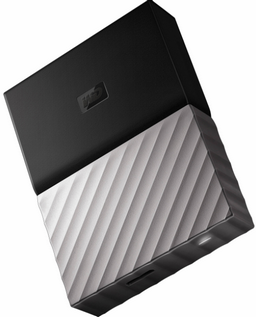
Many users owning this drive reported that they encountered many problems where their drive wouldn’t connect to their computer. The drive would light up and would show signs of ‘connecting’, the drive would be present in device manager, but the computer would not recognize the drive. This problem may occur due to a number of different reasons. The cable may be faulty or the device drivers may not be installed correctly. We have listed down a number of different workarounds. Start from the top and work your way down.
Solution 1: Trying another Cable
Majority of the problems which occur are due to a faulty cable. Cables are pieces of hardware and don’t need a reason to become faulty. After much use, almost all cables require that you get them replaced. First of all, make sure that all the pins are inserted correctly into the drive. Next, make sure that you are plugging the drive into a working USB port. You should try multiple ports and see if they make any difference.
Also, try checking the drive on another computer and see if is being detected there. If it isn’t, it means that there is probably some fault in your cable. Get it replaced and only purchase a valid cable designed for your drive. There are a lot of compatibility issues when we speak about cables designed for hard drives. If changing the cable doesn’t do any good, you can move to the other software solutions listed below.
Solution 2: Changing Drive Letter and Path Name
Another workaround we can try is changing your drive’s letter or path name. Each drive is identified by a unique drive name along with a path through which it can be accessed. We can allocate another drive name to your drive and see if this makes any difference.
- Press Windows + R, type “diskmgmt.msc” in the dialogue box and press Enter.
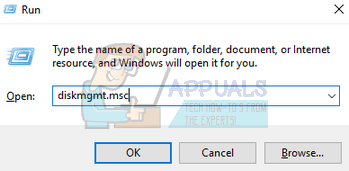
- Once in disk management, right-click on your drive and select “Change Drive Letter and Paths”.

- Click on the “Add” button present at the list of options present.
Note: If your drive already has a name, click on “Change” instead of “Add”. In this case, since the drive is already named “H”, we will click on “Change and select a new drive letter for the hard drive”.

- Now select a new drive letter for your hard drive. Press OK to save changes and exit.
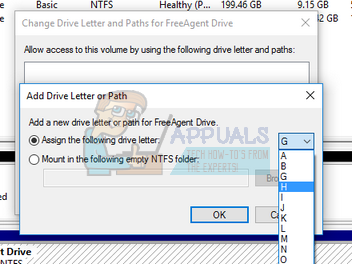
- Now check if you can access the hard drive successfully. If you still can’t, restart your computer and check again.
Solution 3: Reinstalling USB Controllers
USB controllers are pieces of hardware which initialize, power, and run your USB devices. They are the main driving force behind all connections done through USB. We can try refreshing their drivers and see if this solves the problem at hand. We will first uninstall the drivers and then, restart your computer. When the computer restarts, it will automatically detect the hardware connected and will install the required drivers.
- Press Windows + R, type “devmgmt.msc” in the dialogue box and press Enter.
- Once in the device manager, expand the category of “Universal Serial Bus controllers”.
- Navigate through all the entries until you find the controller through which the external hard drive is connected. Right-click on it and select “Uninstall”.
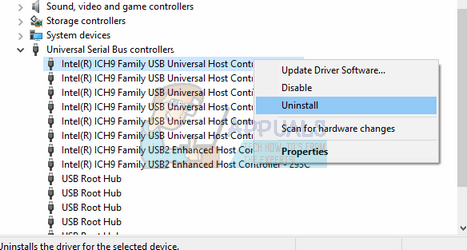
- Restart your computer and check if the problem got solved.
Solution 4: Updating Device Driver
If all the above solutions don’t work, we can try updating the drive’s drivers. Drivers are the main working force for the operation of any device. If all the above solutions don’t work, it means there is no problem with the cable, the file path is valid and the USB controllers are working as expected. We will first ‘ID’ the drive, download the drivers to an accessible location and then try reinstalling them using device manager.
Note: This solution is for situations where your drive is showing up as “Unknown device”. If your drive is showing up correctly in the device manager, you can manually download the drivers without the steps listed below and update them accordingly.
- Press Windows + R, type “devmgmt.msc” and press Enter.
- Once in the device manager, look for “Unknown device”. In can be in the categories of “Disk Drives, Universal Serial Bus controllers, Other devices, or Portable Devices”. Right-click on it and select “Properties”.
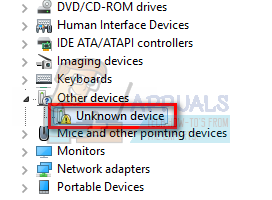
- Click on the tab “Details”. Click on the drop-down menu and scroll through all the entries until you find “Hardware Ids”. Copy the ‘first’ code you see there and paste it into the search engine. You will be able to download the drivers.
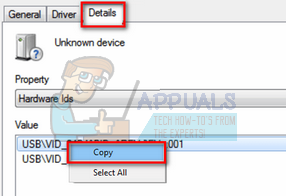
- After you have downloaded the drivers to an accessible location, right-click on the drive again and select “Update driver software”. Select the second option “Browse my computer for driver software”. Now navigate to the driver you saved in the earlier step and install it accordingly.

- Restart your computer and check if you can access the drive successfully.
Note: You should also try plugging all other USB devices from your computer. These devices include your mouse, keyboard, USB flash drives etc. After they are all plugged out, restart your computer and only plug in the hard drive.